Free Science Fair Project Labels: The Best Way To Make Your Project Stand OutAre you looking for a way to make your next science fair project beautiful? Check out these excellent science fair project labels that will make your project look polished and ready for the judges.
These free science fair project labels will help you complete your science fair projects in no time. They make great additions to any science fair project.
What labels to use for your Science Fair Project?
The labels you choose for your project will tell the judges a lot about you and the project. They tell the judges whether you are a motivated student, interested, and excited about science. They also give the judges an indication of how interesting your project is.
You must consider the problem, the variables, the procedure, safety measures, and conclusion as your main labels, however as per your project, you could add more. Following is a list of commonly used labels along with explanations as to how they add to your experiment. Choose the ones that apply to yours specifically:
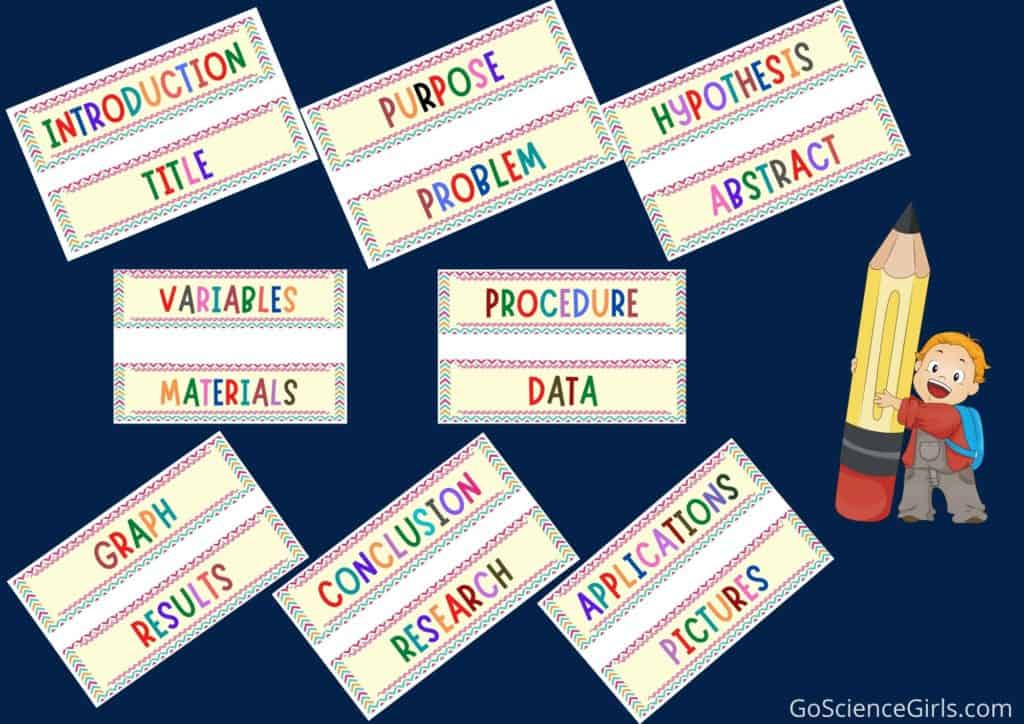
Title
The most basic requirement involves highlighting the topic of your project in 4-5 words.
Introduction
An insight into what your experiment is about and what you’re going to cover through the entire process.
Purpose
An explanation as to ‘why’ you thought of diving into your topic and what you want to gain out of it.
Hypothesis
A standardized format that follows the “If, then, because” rule. It’s speculation you make before conducting the actual experiment. You predict what will happen ‘if you do something, ‘because of a scientific principle involved.
Abstract
A summary of your final report. It should range between 100-250 words that sum up your experiment in a condensed manner.
Variables
Also known as the factors that affect your experiment, these can be categorized into dependent, independent, and constant.
Materials
All the equipment you need for your experiment. Could be as simple as a pencil, to as complex as a machine.
Procedure
A step-by-step guide of your process. In simple words, it is ‘how you conduct your experiment’ but in written form.
Data
Your outputs and observations after conducting the experiment. Usually in the form of numbers.
Graphs
A more visual and graphic representation of your data. Bar graphs, line graphs, pie charts, etc.
Results
Your interpretation and comprehension of the data and graphs.
Conclusion
The final judgment/deduction of the topic. This is made according to the results you receive after having conducted the experiment.
Research
Understanding and comparing your results and observations to the content available online or through other sources. This is done generally to test the validity and reliability of your conclusion.
Applications
An explanation as to how your experiment can be used in the real world, on a daily basis.
Pictures
Visual representation of your entire experiment. Helps the audience or viewers get a practical idea of your process, instead of just a theoretical one.
These were a good handful of labels you can use when completing a science project that will be put up for showcase in front of a crowd. They not only give you clarity on every aspect of your process but also make it easier for the audience to understand your journey. Without these labels, everything would be jumbled up and cumbersome to comprehend, let alone to read.

Tips For Designing Best Labels for Project Boards
To master the art of simplifying your experiment into layman language that your viewers will be able to understand, you must know how to design the best labels for your science fair project boards. Below are a few tips you can rely on for the same:
Choose the right headers
For your project board, you will have a plethora of information that you’d want to get across to your audience. However, it is necessary for you to break down each aspect of your experiment for better understanding. Don’t choose labels that won’t apply to your project, select the ones that are the most relevant and self-explanatory.
Create a checklist
Once you know the labels, graphs, and pictures you need to incorporate, start jotting all your points down on paper. This will help you tick off all the elements you’ve printed/drawn and thus organize your project well.
Keep the font and color bold
After identifying the labels you want to add to your project board, design them in a font and color that will attract people.
Use short words
Your labels shouldn’t be as long as sentences. They need to be 1-2 words at max. The audience should be able to understand what you’re talking about just by glancing at that one word. If you’re talking about your procedure, simply use the word “Process”, and if you’re talking about your observations, use “Result” or “Conclusion.” Keep it simple.
Use good-quality materials
Labels need to shine through your entire board. If you use sloppy materials that make your labels look dull or unreadable, you won’t be able to hold on to your audience’s attention for too long. Make sure to hit your quality and simplicity marks at the same time.
If you still want more clarity on design labels, we’ve got plenty of options for you. In fact, we’re giving them out free of cost for your benefit!
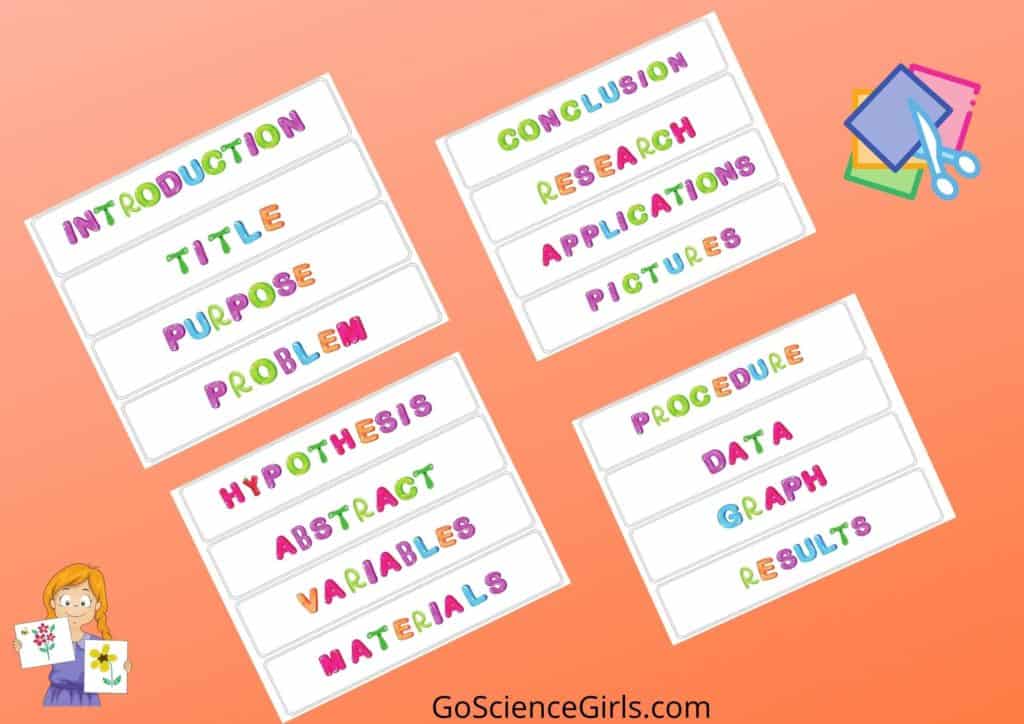
Print at Home Science Project labels
Most teachers provide their own labels — either on their own or downloaded from a website. But here are some simple ways to make your own.
The labels don’t need to be fancy. Just use a black marker to write them on the outside of the boxes on clean white paper.
Alternatively, you can use our (FREE) Science Fair Labels, a full set of labels you can use for your child’s science fair project. These science fair project labels come in PDF formats.
These labels will make displaying your student’s work a breeze.
Each label is ready to print! Just open and print!
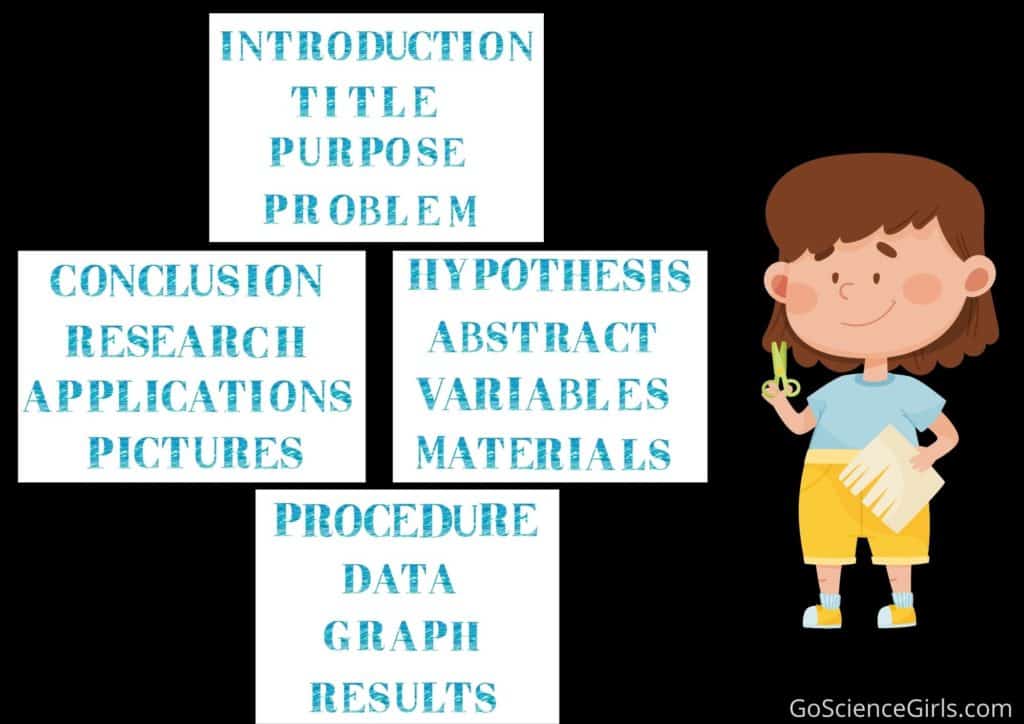
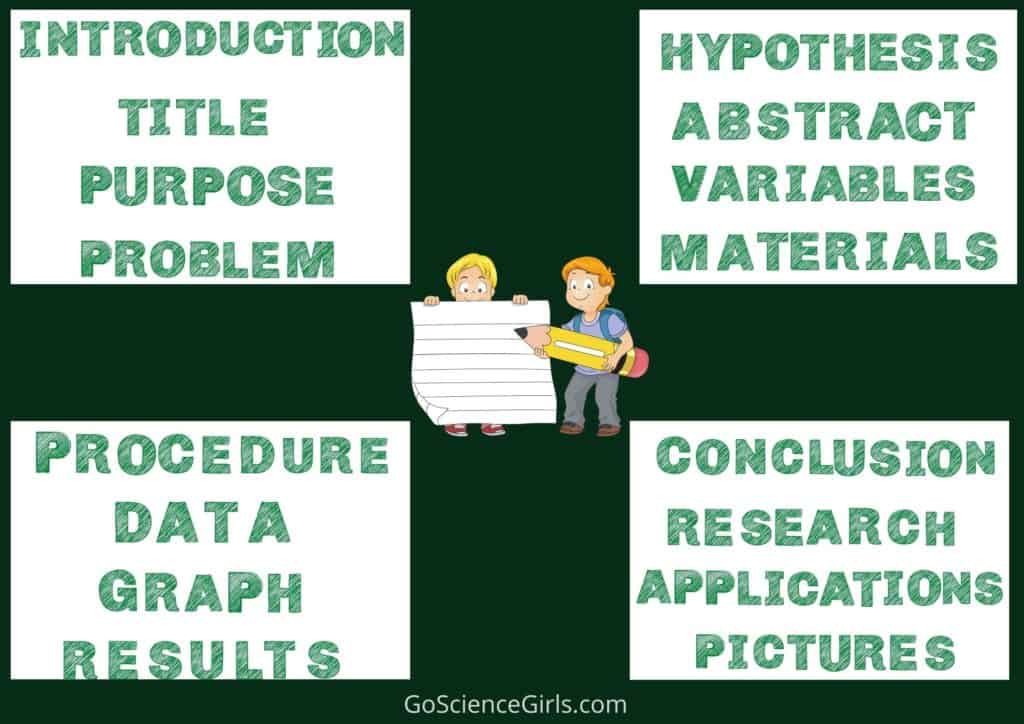
Some tips for Printing Science Fair Project Labels
What are the most popular label sizes, and how do you know which one to use? Choosing the right size for your project is key to labelling your labelling needs.
The first step is figuring out which type of label will best suit your needs. The second step is determining the appropriate size for your label.
Specialists from Essay Tigers advise using clear, concise labels, and avoiding abbreviations or clichés.
One of the most important aspects is how labels will be presented on the project. Labels should be large enough to allow for proper identification, yet small enough that they do not take up too much space.
Colors – Most teachers simply print the labels on white card stock, but that’s probably not the best color to use. Students have to be able to clearly see the labels, and if they’re printed on white stock, they likely won’t. Choose a dark-colored card stock instead.
Print them big enough – If they’re too small, students won’t be able to read the details. Most teachers print their labels on a standard 8.5 x 11 sheet of paper, which works fine — but it’s actually too big.
You can try printing them on a standard sheet of labels, which tends to be about 4 x 6 inches. Smaller labels work better. Choose your label size wisely.
Small font – Use a small font (such as 11 or 12 points). It’s best to use capital letters and sharp, clear lines.
Use color – Label parts with big, bold letters. You don’t have to use color, but students will be more likely to notice them if they’re printed in a different color.
Position parts right – Label parts with symbols or arrows. This helps students orient the parts quickly.
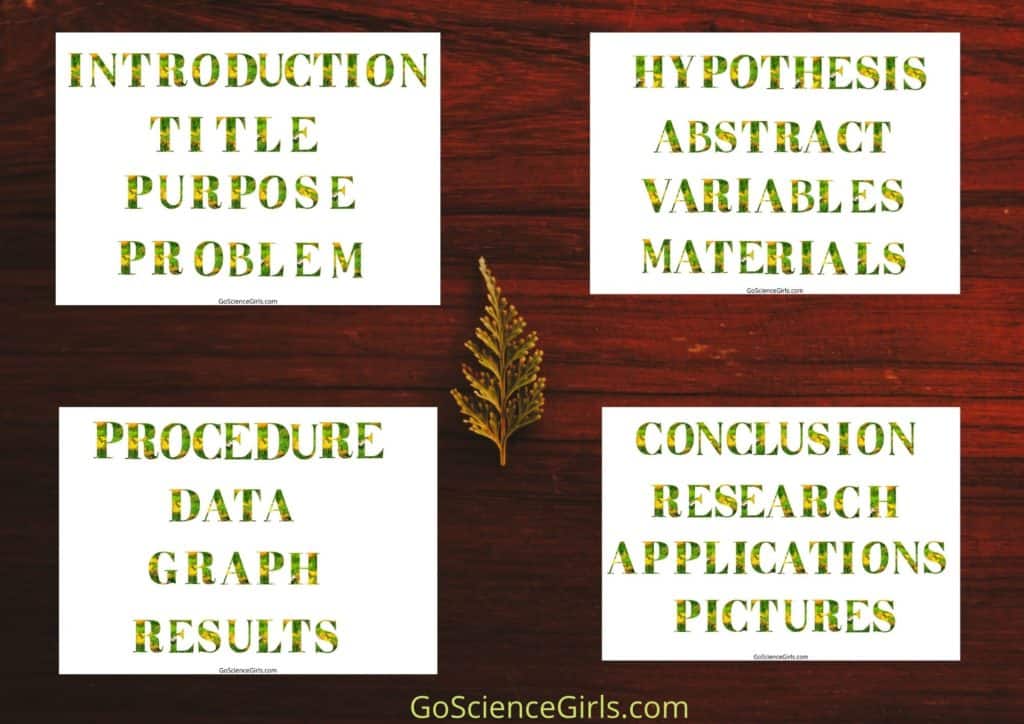
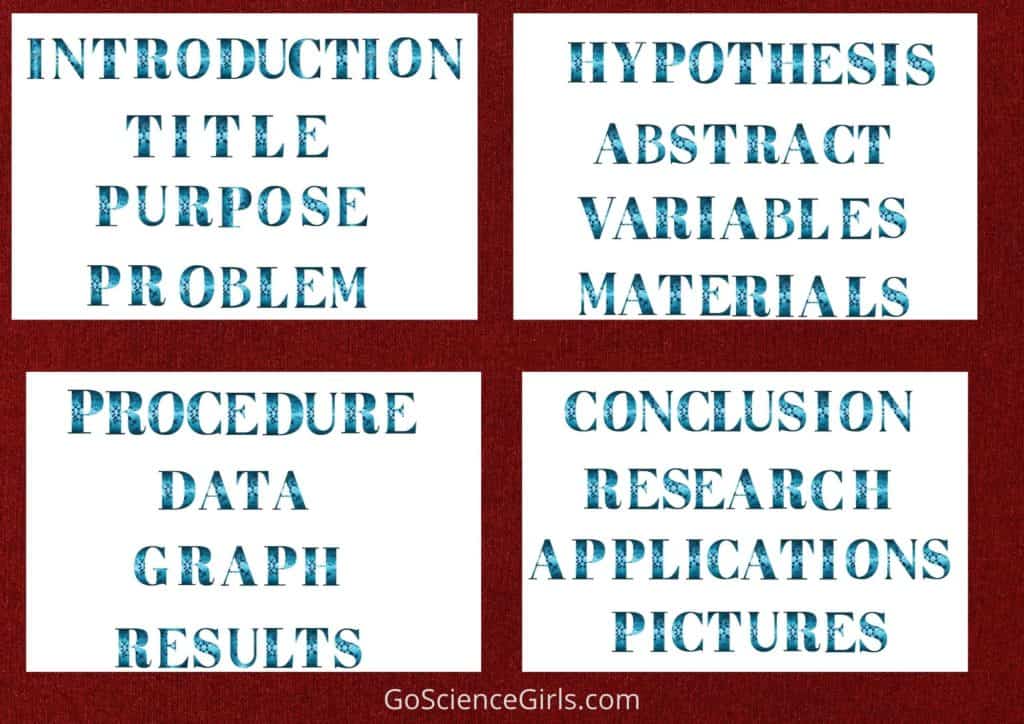
Why Choosing the Right Project Label for Your Display Board is Important?
Most science fair judges aren’t scientists. They have no background to judge your science fair project. So it helps to tell them what it is.
The project label is the first thing the judge sees. It may be the only information the judge has to judge your project. So choosing carefully is important. It determines not only whether the judge will respect your judgment, but also whether he or she will give you credit for it.
Here are few things to think about:
- First, you want the labels to reflect your understanding of the content, not your lack of understanding.
- Go the extra mile to make your science fair project board look professional.
- Start with the most important information. Have students write down the most essential information, such as the experiment’s hypothesis, procedures, materials and results, on large sheets of paper. Label each sheet clearly. Then use those sheets to label your display. This way, students won’t forget what they’re doing, and they’ll be able to refer to the information easily.
- Label everything clearly. If students can’t read the labels, they won’t be able to follow your instructions. Use clear, concise labels, and avoid abbreviations or clichés. Even the easiest experiment is a scientific mystery to many students, and labels will help them easily figure out what they need to do.
- Be consistent. Label everything — tables, equipment, data — so students know exactly where to go.
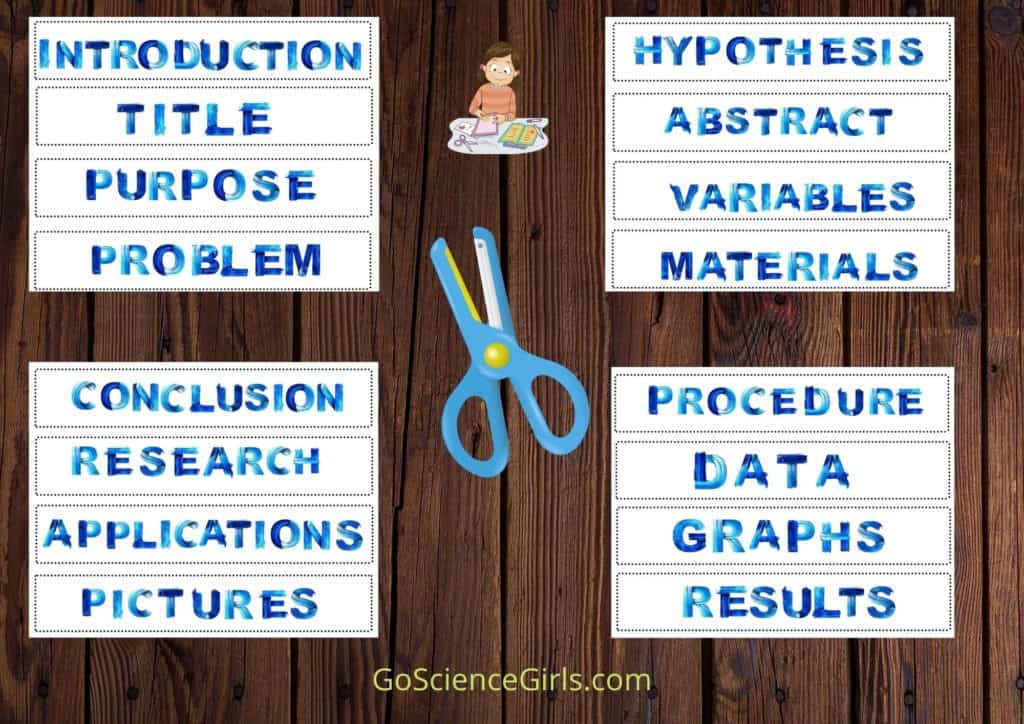
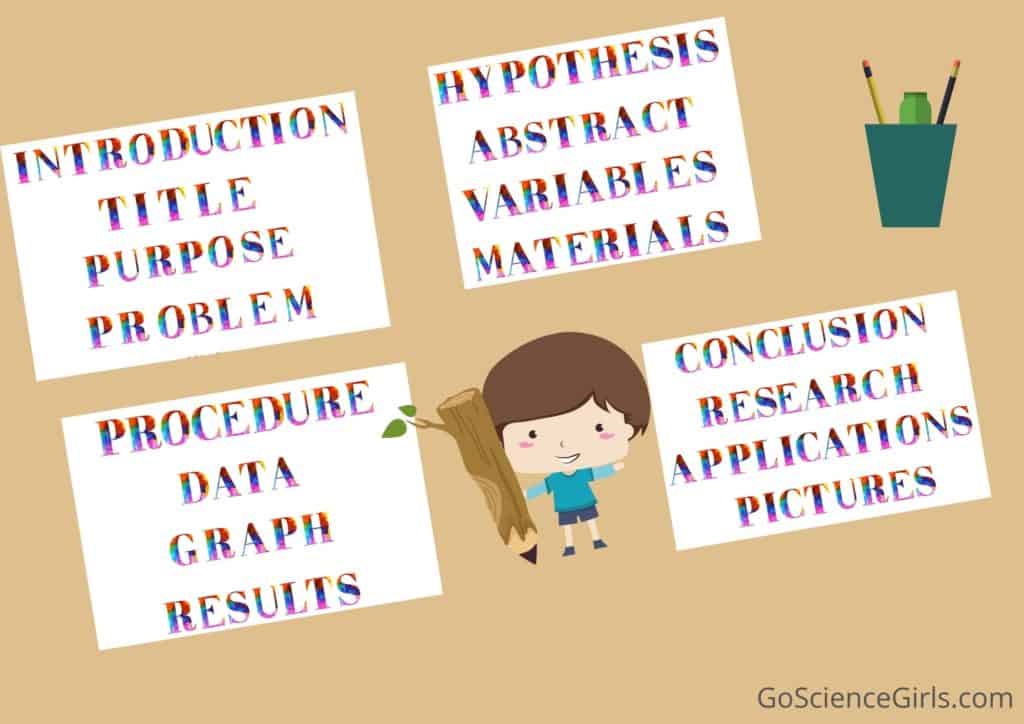
Tips for Wording vs Diagrams in Your Display Board
One of the most important aspects of a science project is labeling all your parts. Labeling your parts will make it easy for others to understand what your object is supposed to be and it will make it easier for you when you go to put the project together. Keep in mind that not everyone knows how to read words, so it is a good idea to label with pictures too.
Posters of physical science projects usually have a diagram. The diagram is supposed to show what you mean by “you have to put the metal rod in this slot.” However, there are three problems with diagrams.
First, diagrams aren’t very visual. People don’t read diagrams very well. You can see this for yourself: how many of you can describe a diagram of a circle by saying, “It’s like a pie”?
Second, diagrams don’t express any details. A diagram has to share space with lots of other things, and that means that it can’t show any details. When a diagram shows nothing, it’s hard to know what it shows.
Third, diagrams don’t help other people understand your project. People sometimes ask, “What’s your project about?” and the answer isn’t obvious. A diagram is supposed to tell them, but it doesn’t.
So, what should you put on your poster? Well, you could put words, but words don’t help people who don’t read as easily, and they usually get ignored.
You could put a picture. But a picture has to be simple and clear, and pictures often aren’t.
So my take would be to combine both the wordings and the pictures to make the project visually appealing to the users.
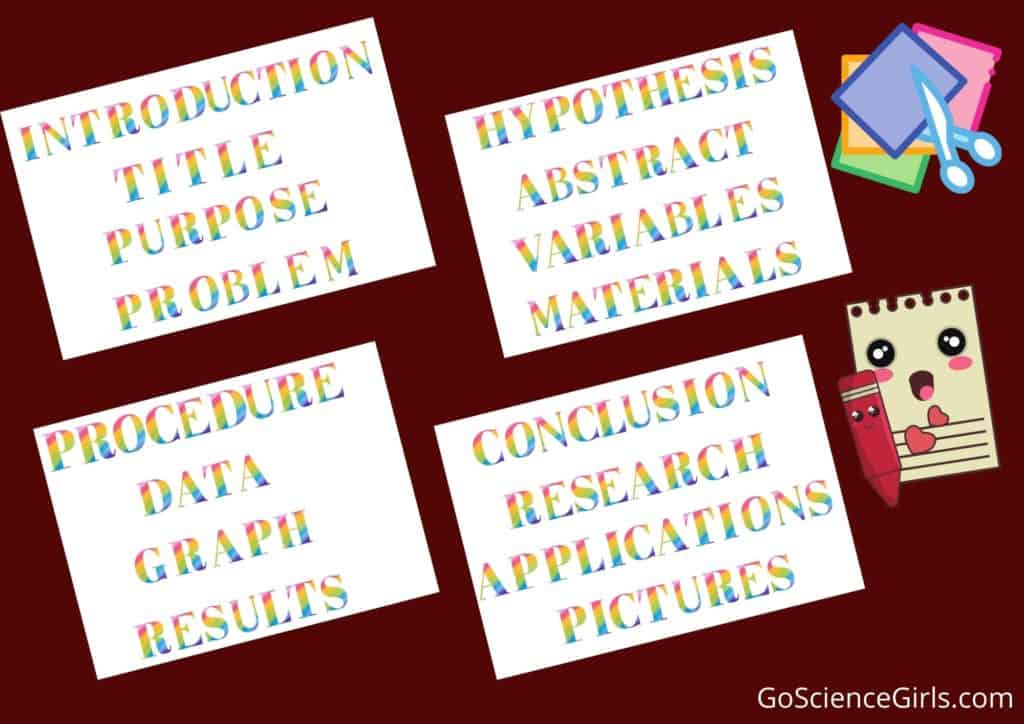
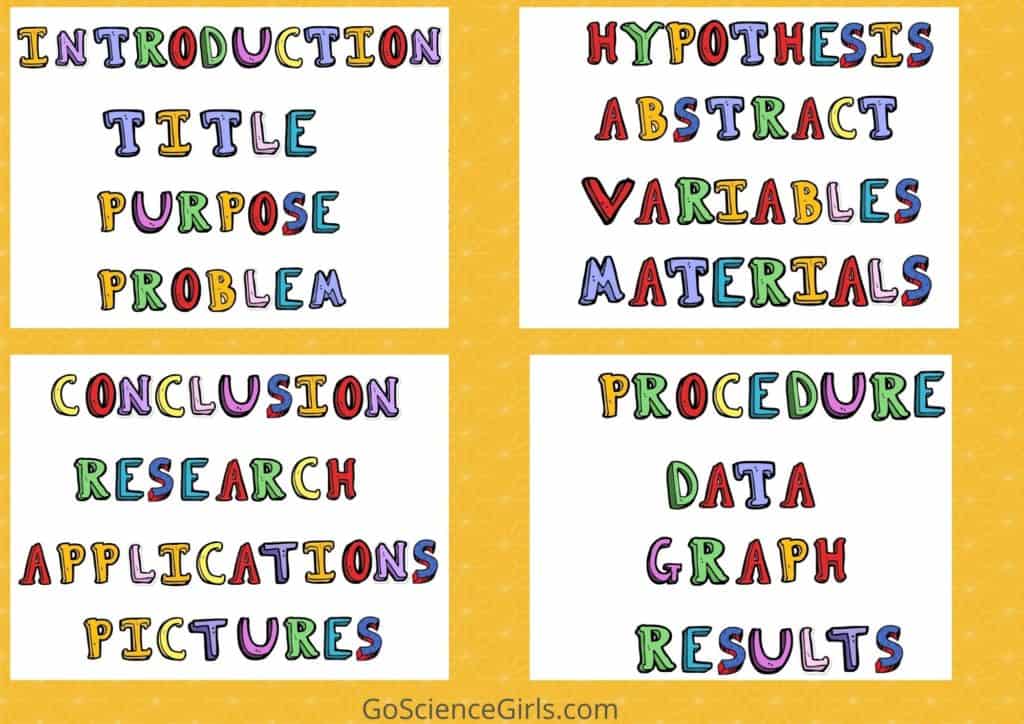
How to Name the Science Fair Project
If, however, you haven’t worked on a project before and aren’t sure what labels to use, here are some things to think about.
First, look at other science fair projects. A science fair judge will look at the projects in his group, see what labels the other students used, and then decide how to label his own project. If many of his neighbors used labels such as “The Effect of Thermodynamics on the Rate of Evaporation,” he’ll probably pick “The Effect of Thermodynamics on the Rate of Evaporation” for his own project.
Another approach is to pick a label that describes your project in one sentence. For example, “A device to measure the concentration of carbon dioxide at a gas well” sounds like a reasonable summary of what your project will do.
The most important part of a science fair project is its title. The title is the first thing people look at, and the right title can turn them into interested readers. The wrong title can turn them off.
The title should tell something about why your project is important.
At minimum, the title should answer the below set of questions:
- What problems does the project address, and how?
- What sort of answers do you expect to get?
- What sort of questions does the project raise?
- Is the method you used standard, or is there something special about it?
- What are you trying to find out?
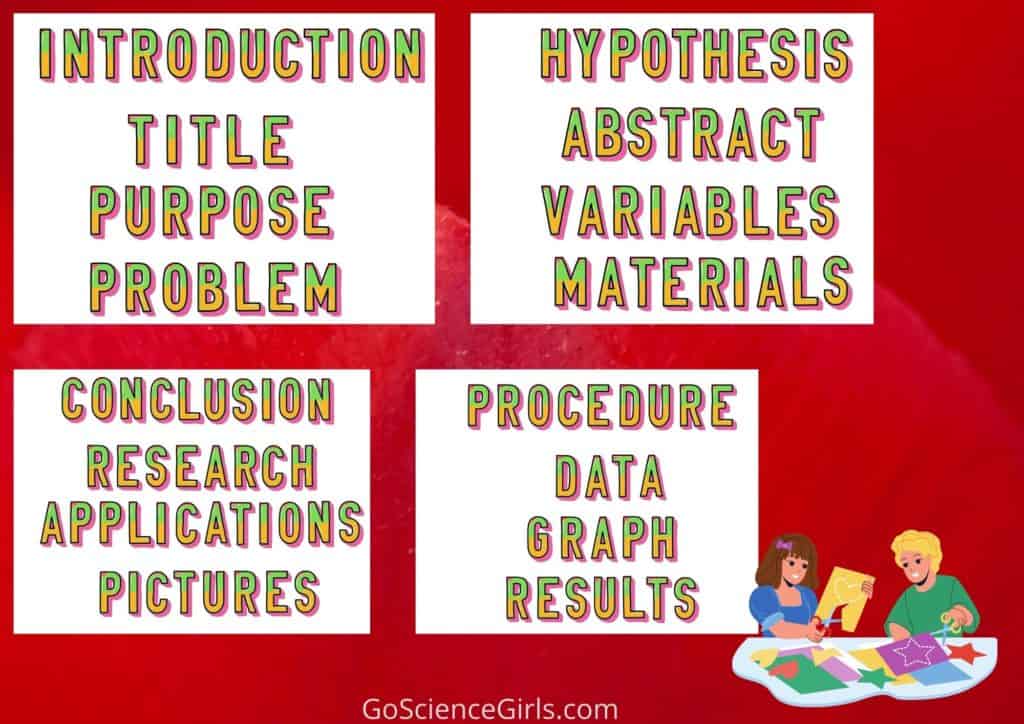
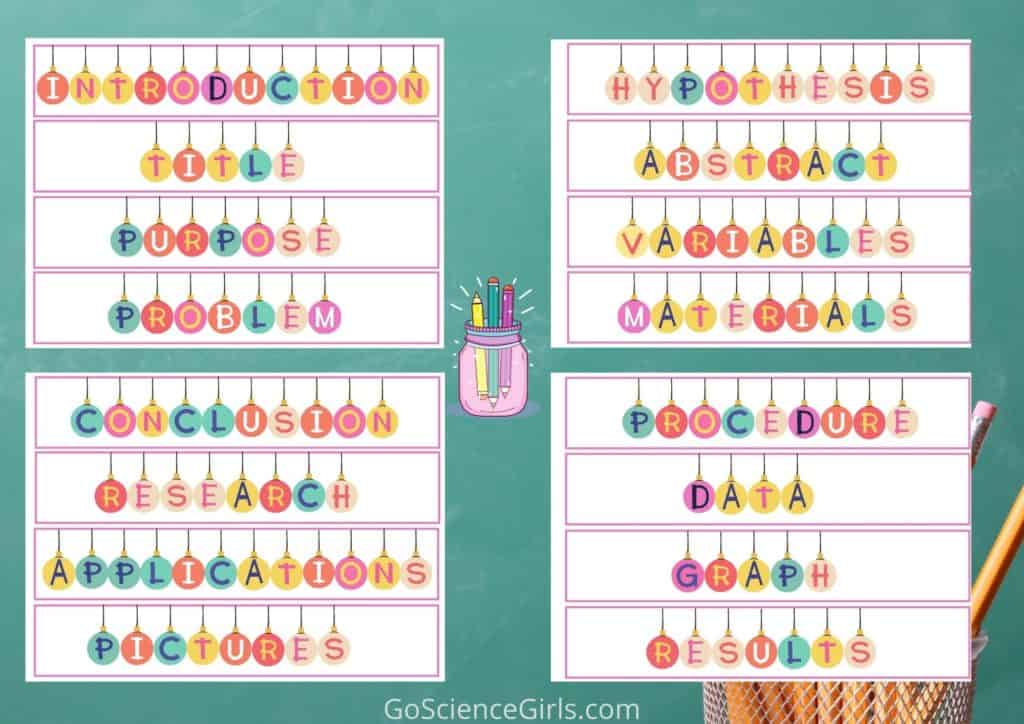
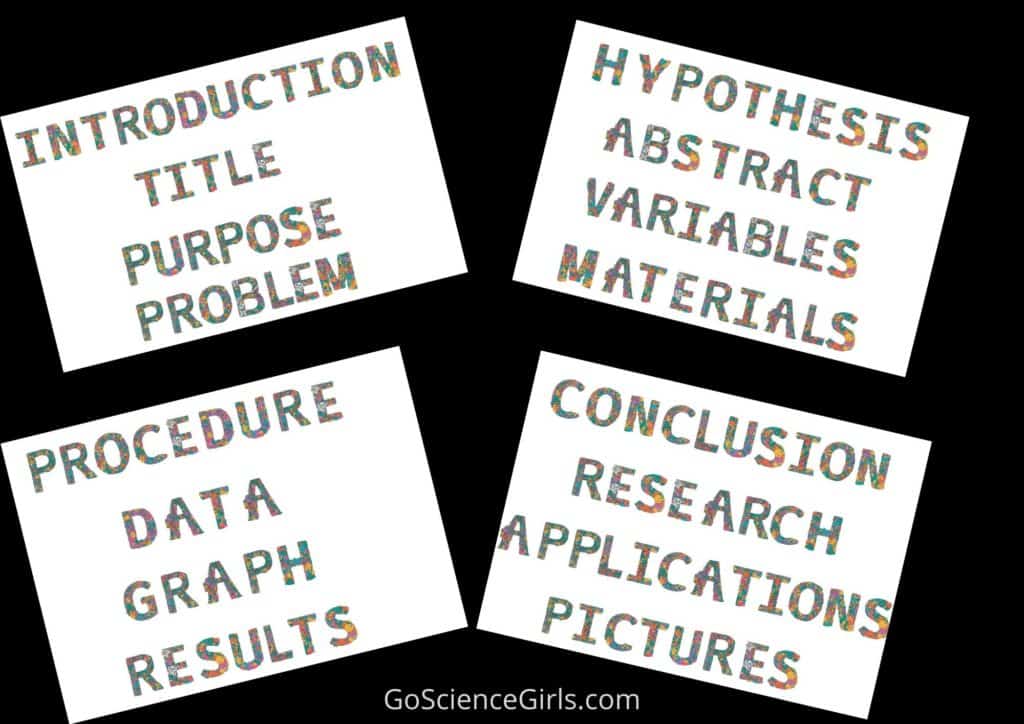
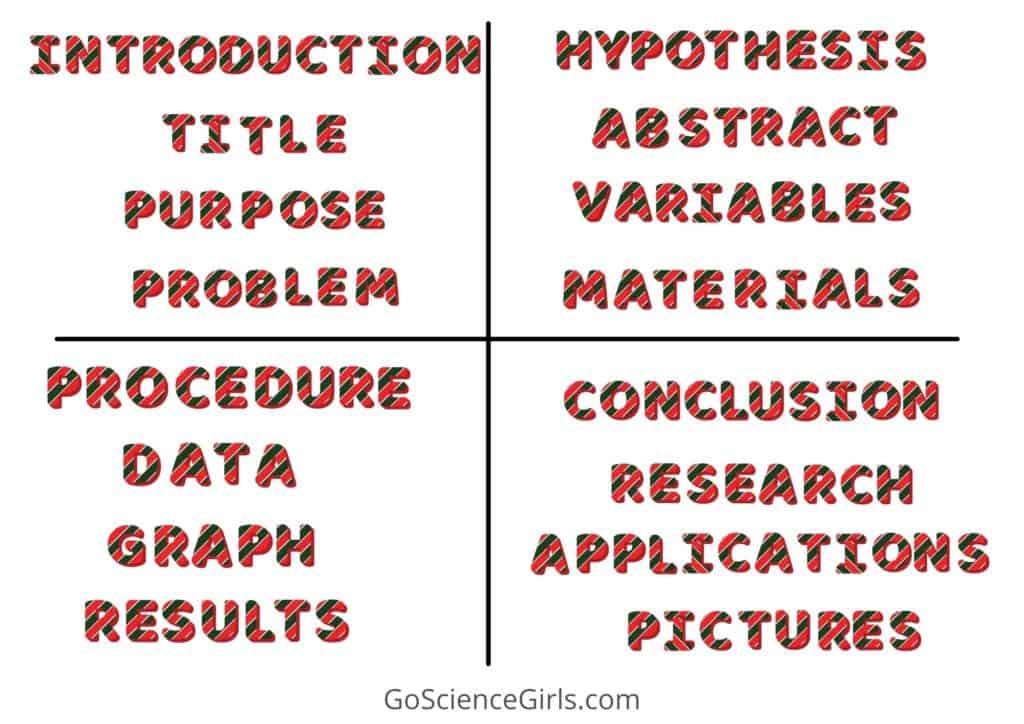
Final Say
Attention budding scientists: If you’re looking to make an impression with your science project, our labels and templates will make sure you get noticed.
We hope these templates and tips were helpful for you. Always ensure your science fair project board is easy to understand, but also expresses the information you’ve gathered in the most accurate way possible. Labels will make the process simpler!
